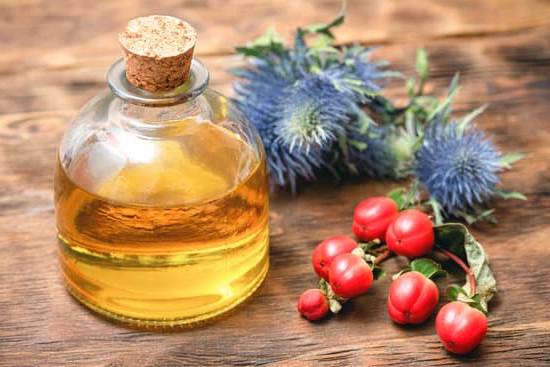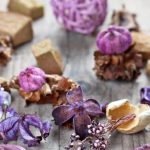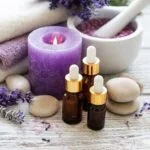Aromatherapy treatments have a long and rich history, dating back to ancient civilizations and continuing to be used in modern-day applications. The practice involves the use of essential oils to promote physical, mental, and emotional well-being. From traditional inhalation methods to modern diffusion techniques, aromatherapy has evolved over time to offer a wide range of benefits for individuals seeking natural healing remedies.
The history of aromatherapy is deeply rooted in ancient cultures such as the Egyptians, Greeks, and Chinese, who utilized aromatic plants and essential oils for medicinal and spiritual purposes. Over time, this practice has expanded to include various treatment types tailored to specific conditions such as stress, anxiety, insomnia, and pain relief. In recent years, aromatherapy has gained popularity as a complementary therapy in spa and wellness centers, offering clients a holistic approach to overall health and relaxation.
In this article, we will explore the origins and historical usage of aromatherapy treatments, shedding light on the various benefits it offers for both ancient and modern societies. We will delve into the specific uses of essential oils in aromatherapy treatments, different methods of dispersal, massage techniques, safety precautions, and ways to incorporate aromatherapy into daily routines at home.
Whether you are new to aromatherapy or an experienced practitioner, there is much to learn about this ancient healing art form that continues to thrive in today’s world.
Benefits of Aromatherapy
The use of aromatherapy treatments type has been known for centuries, with its roots in ancient civilizations such as Egypt, China, and India. Aromatherapy involves the use of essential oils extracted from plants to promote holistic health and well-being. The practice has evolved over time and is now widely used in modern-day applications, including spa treatments, wellness centers, and even at home.
One of the key benefits of aromatherapy treatments is its ability to improve physical health. Certain essential oils have been found to possess anti-inflammatory and pain-relieving properties, making them beneficial for conditions such as arthritis, muscle aches, and headaches. In addition, the inhalation of essential oils can also have positive effects on respiratory health, helping to clear airways and alleviate symptoms of congestion and allergies.
In terms of mental and emotional health improvements, aromatherapy treatments are known for their calming and stress-relieving effects. Certain essential oils such as lavender and chamomile have been shown to promote relaxation and improve overall mood. This makes aromatherapy an ideal option for those looking to reduce anxiety, improve sleep quality, and enhance their emotional well-being.
| Benefits | Description |
|---|---|
| Physical Health | Aromatherapy treatments can help with conditions like arthritis, muscle aches, headaches etc. |
| Mental & Emotional Health | Aromatherapy treatments are known for their calming effects which reduces anxiety & improves sleep quality. |
Essential Oils and Their Uses
Aromatherapy treatments type uses a variety of essential oils, each with its own unique set of benefits and uses. Some of the most popular essential oils used in aromatherapy treatments include lavender, peppermint, eucalyptus, tea tree, and lemon. Lavender is known for its calming properties and is often used to help alleviate stress and promote relaxation. Peppermint is commonly used for its invigorating and refreshing scent, making it beneficial for reducing fatigue and improving focus.
Eucalyptus essential oil is frequently used for respiratory issues due to its decongestant properties, and it can also serve as an effective insect repellent. On the other hand, tea tree oil is renowned for its antimicrobial properties, making it a popular choice for addressing skin conditions such as acne or fungal infections. Lastly, lemon essential oil is valued for its uplifting and energizing aroma, often utilized to boost mood and improve mental clarity.
In addition to these popular essential oils, there are numerous others that offer a wide range of therapeutic benefits in aromatherapy treatments type. For example, rosemary is often used to enhance cognitive function and reduce muscle pain, while chamomile is prized for its calming effect on the nervous system.
Frankincense is cherished for its ability to promote feelings of relaxation and spiritual wellness. Understanding the specific uses and benefits of different essential oils allows individuals to tailor their aromatherapy treatments to address their unique needs and preferences.
Whether using essential oils through inhalation, topical application, or diffusion methods such as using an aromatherapy diffuser, incorporating these powerful plant extracts into one’s wellness routine can provide a multitude of physical, mental, and emotional health improvements. With proper knowledge of the various essential oils available in aromatherapy treatments type comes the opportunity to harness their holistic benefits in promoting overall well-being.
Aromatherapy Diffusers and Methods
When it comes to aromatherapy treatments, the method of dispersing essential oils is crucial to reaping their benefits. Here are some popular diffusers and methods used in aromatherapy treatments:
- Inhalation: One of the most common methods of using essential oils is through inhalation. This can be done by adding a few drops of essential oil to a bowl of hot water and inhaling the steam, or by using a portable inhaler. The inhalation method allows the aroma of the essential oil to enter the bloodstream and provide various therapeutic effects for both the mind and body.
- Topical Application: Another popular method for aromatherapy treatments is through topical application. This involves diluting essential oils with a carrier oil and applying them directly to the skin, usually through massage or targeted application. The skin absorbs the oils, allowing them to enter the bloodstream and provide localized or systemic benefits.
- Diffusion: Using a diffuser is a popular way to disperse essential oils throughout a room, creating a soothing and therapeutic atmosphere. There are various types of diffusers available, including ultrasonic diffusers, nebulizing diffusers, heat diffusers, and evaporative diffusers. Each type has its own unique way of dispersing essential oils into the air, allowing individuals to enjoy their aromatic benefits.
Overall, choosing the right method for aromatherapy treatments depends on individual preferences and needs. Whether it’s through inhalation, topical application, or diffusion, each method offers its own set of benefits for physical, mental, and emotional well-being. It is important to consider safety precautions and proper dilution when using any aromatherapy treatment type to ensure maximum effectiveness without adverse side effects.
Aromatherapy Massage Techniques
Aromatherapy massage is a type of treatment that combines the benefits of essential oils with the therapeutic effects of massage. This technique has been used for centuries to promote relaxation, reduce stress, and alleviate muscle tension. Aromatherapy massage involves the use of specific essential oils that are either applied directly to the skin or inhaled during the massage session. The combination of touch and scent creates a holistic experience that can enhance both physical and mental well-being.
There are several different aromatherapy massage techniques that can be used to target specific concerns and achieve desired outcomes. Some common techniques include Swedish massage, deep tissue massage, lymphatic drainage, and reflexology. Each of these techniques incorporates the use of essential oils to enhance the therapeutic effects of the massage. For example, lavender oil is often used for relaxation and stress relief, while peppermint oil may be used for its invigorating and cooling properties.
In addition to promoting relaxation and reducing stress, aromatherapy massage techniques can also help alleviate various physical ailments such as headaches, muscle pain, and insomnia. The specific choice of essential oils in combination with targeted massage techniques can provide relief from these conditions and contribute to an overall sense of well-being. Whether receiving a professional aromatherapy massage at a spa or practicing self-massage at home, individuals can reap the benefits of this unique treatment type.
Overall, aromatherapy massage techniques offer a multi-sensory approach to healing and wellness. By incorporating the use of essential oils with therapeutic touch, individuals can experience not only physical relaxation but also emotional balance and mental clarity. Whether seeking relief from specific ailments or simply looking to unwind after a long day, aromatherapy massage has become a popular treatment type for those looking to improve their overall health and well-being.
Aromatherapy Treatment Types for Specific Conditions
Aromatherapy treatments can be tailored to address specific conditions such as stress, anxiety, insomnia, and pain relief. The use of essential oils in aromatherapy has been shown to have a positive impact on various symptoms and conditions by promoting relaxation, improving sleep quality, reducing stress and anxiety, and providing natural pain relief. Here are some common aromatherapy treatment types for specific conditions:
- Stress: Aromatherapy treatments for stress often include essential oils such as lavender, chamomile, and bergamot, which are known for their calming and relaxing properties. These essential oils can be used in diffusers, inhalers, or added to bath water to create a soothing environment that promotes relaxation and reduces the effects of stress.
- Anxiety: When it comes to addressing anxiety, aromatherapy treatments often incorporate essential oils like frankincense, ylang-ylang, and jasmine. These oils can help alleviate symptoms of anxiety by promoting a sense of calm and tranquility. Whether used in a diffuser or applied through massage or inhalation techniques, these oils can provide relief from anxious feelings.
- Insomnia: Aromatherapy treatments for insomnia may include essential oils such as lavender, roman chamomile, and valerian root. These oils are known for their sedative properties and can be used in pillow sprays, diffusers, or massage blends to promote relaxation and improve sleep quality.
- Pain Relief: Aromatherapy treatments for pain relief often involve the use of essential oils such as peppermint, eucalyptus, and ginger. These oils have analgesic and anti-inflammatory properties that can help alleviate discomfort from headaches, muscle tension, joint pain, and other sources of chronic or acute pain.
Incorporating aromatherapy into one’s self-care routine can provide natural relief for various conditions while also offering a pleasant sensory experience. Whether using it at home or seeking professional treatments at spas or wellness centers, aromatherapy has the potential to positively impact physical well-being as well as mental health.
By understanding the different treatment types for specific conditions and selecting the appropriate essential oils based on individual needs, individuals can harness the power of aromatherapy to support their overall health and wellness journey.
Aromatherapy Safety and Precautions
Proper Dilution
When using essential oils for aromatherapy treatments, it is crucial to understand the importance of proper dilution. Essential oils are highly concentrated and can cause skin irritation or other adverse reactions if not diluted correctly. The standard dilution rate for most essential oils in aromatherapy is around 2%, which equates to about 12 drops of essential oil per ounce of carrier oil. However, some essential oils may require even further dilution due to their potency.
Potential Side Effects
While aromatherapy treatments can offer a wide range of benefits, it is essential to be aware of potential side effects that may occur. Some individuals may experience allergic reactions or skin sensitivities when using certain essential oils. Additionally, inhaling concentrated essential oils directly from the bottle can cause respiratory issues such as coughing or shortness of breath. It is important to use caution and start with small amounts when using aromatherapy treatments to monitor any adverse reactions.
Contraindications
Certain medical conditions or medications may interact with aromatherapy treatments, leading to potentially harmful effects. For example, pregnant women should use specific essential oils with caution due to their potential to induce contractions or affect hormone levels. Individuals with asthma or other respiratory conditions should also be cautious with inhalation methods of aromatherapy. It is always recommended to consult with a healthcare professional before starting any new aromatherapy regimen, especially if you have underlying health concerns or are taking medication.
By adhering to these safety tips and precautions, individuals can enjoy the benefits of aromatherapy treatments while minimizing any potential risks or adverse effects.
Aromatherapy at Home
Incorporating aromatherapy treatments into your daily routine at home can be a simple and effective way to promote overall well-being. With the right knowledge and tools, you can create a soothing and relaxing atmosphere in the comfort of your own space. Here are some tips and guidance on how to incorporate aromatherapy treatments into your daily routines at home, including DIY recipes and best practices.
One of the key aspects of aromatherapy at home is creating a relaxing atmosphere where you can fully benefit from the effects of essential oils. Consider using a diffuser to disperse essential oils into the air, allowing you to enjoy their aromatic qualities throughout your living space. Whether it’s in your bedroom, living room, or bathroom, diffusing essential oils can help set the tone for relaxation and stress relief.
To enhance your at-home aromatherapy experience, consider creating your own DIY aromatherapy products using essential oils. From homemade room sprays and linen spritzers to soothing bath salts and massage oils, there are numerous recipes available for you to explore. By customizing these products with essential oils that cater to your specific needs, you can personalize your aromatherapy treatments according to your preferences.
Best Practices for Aromatherapy at Home
When incorporating aromatherapy treatments into your daily routines at home, it’s important to follow best practices to ensure safety and effectiveness. Always use high-quality essential oils from reputable sources, dilute them properly according to recommended guidelines, and be mindful of potential sensitivities or allergies. Additionally, consider learning about different application methods such as inhalation, topical use, or diluted massage blends to maximize the benefits of aromatherapy in a safe manner.
Aromatherapy in Spa and Wellness Centers
In conclusion, aromatherapy treatments have a rich history dating back to ancient civilizations and continue to be used in modern-day applications for their various benefits. From promoting physical relaxation and pain relief to improving mental and emotional well-being, the use of essential oils in aromatherapy has become increasingly popular.
With a wide range of essential oils available, each with its specific uses and benefits, aromatherapy treatments can be tailored to address specific conditions such as stress, anxiety, insomnia, and pain relief.
In professional spa and wellness centers, the use of aromatherapy treatments has become integral to the overall experience for clients. Aromatherapy massages, facials, and body wraps are among the popular treatments offered, providing a sensory-rich experience that promotes ultimate relaxation and rejuvenation. The use of different diffusion methods in spa settings enhances the ambiance and contributes to a calming environment for clients seeking a holistic approach to wellness.
It is important for individuals to understand the safety precautions and considerations when using aromatherapy treatments at home or in professional settings. Proper dilution, potential side effects, and contraindications should be taken into account to ensure a safe and effective experience. Whether incorporated into daily routines at home through DIY recipes or experienced in spa settings as part of a luxurious treatment, aromatherapy offers a natural and holistic approach to enhancing health and well-being.
Frequently Asked Questions
What Techniques Are Used in Aromatherapy?
Aromatherapy utilizes various techniques such as inhalation, topical application, and diffusion of essential oils. These techniques can be used to address different physical, mental, and emotional concerns.
What Type of Medicine Is Aromatherapy?
Aromatherapy is considered a complementary medicine that focuses on using natural plant extracts, particularly essential oils, to promote overall well-being. It is often used in conjunction with conventional medical treatments.
What Are the 5 Categories of Essential Oils?
The five categories of essential oils are floral, citrus, woody, spicy, and resinous. Each category offers unique therapeutic properties and aroma profiles that can be used for different purposes such as relaxation, concentration, or mood enhancement.

Are you looking for a natural way to improve your health and wellbeing?
If so, aromatherapy may be the answer for you.




